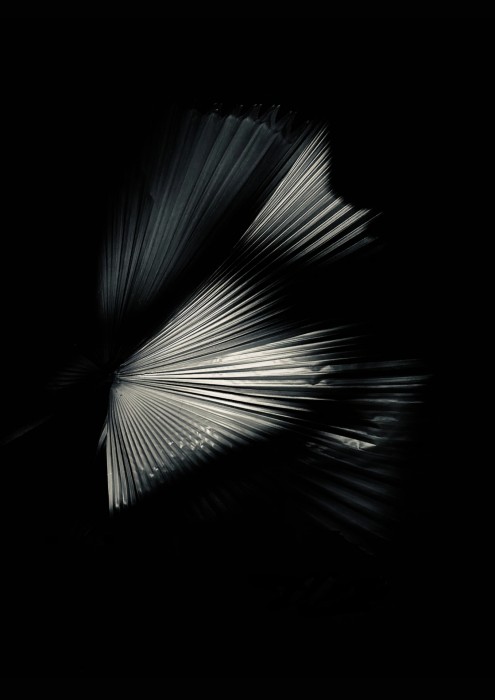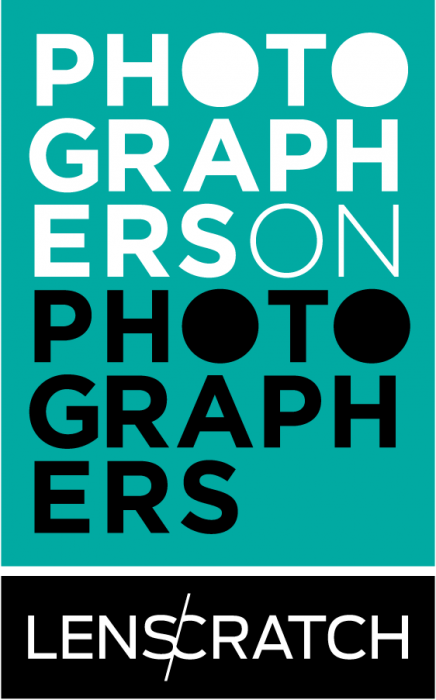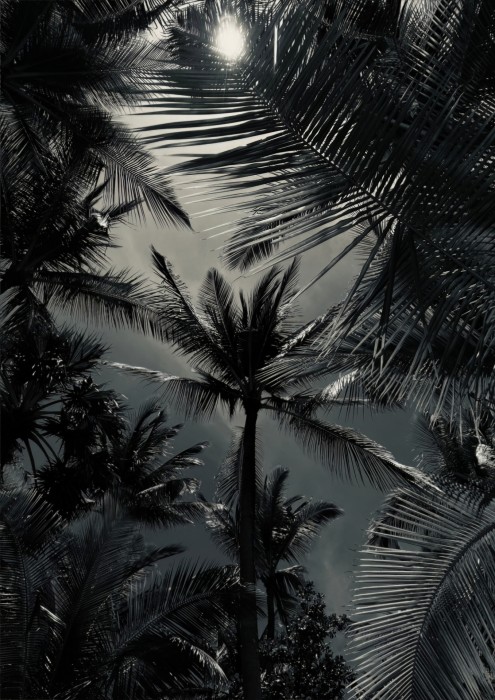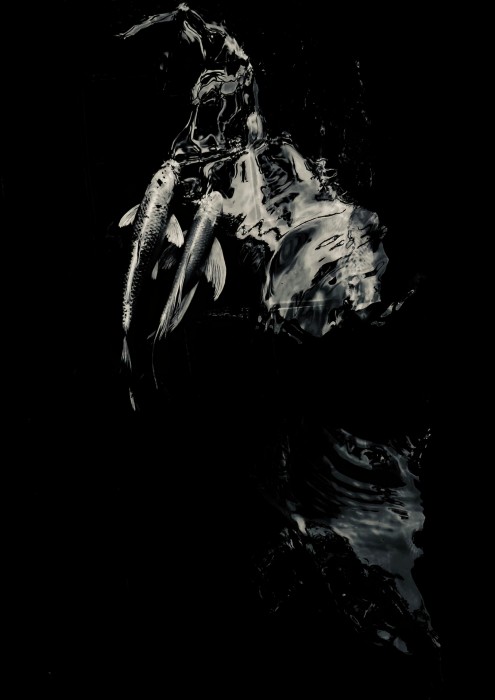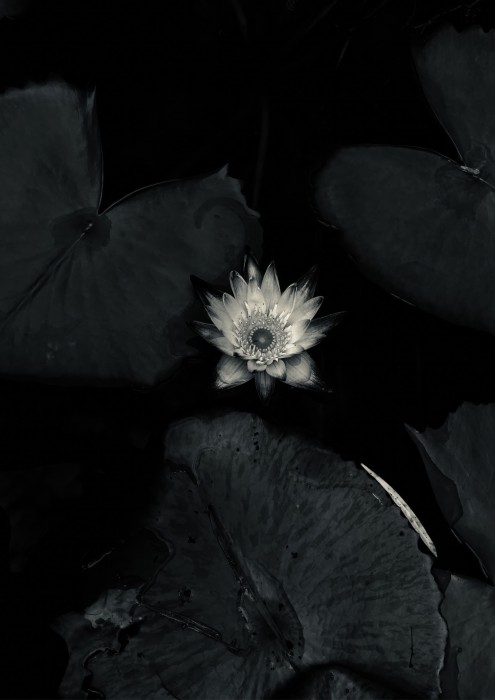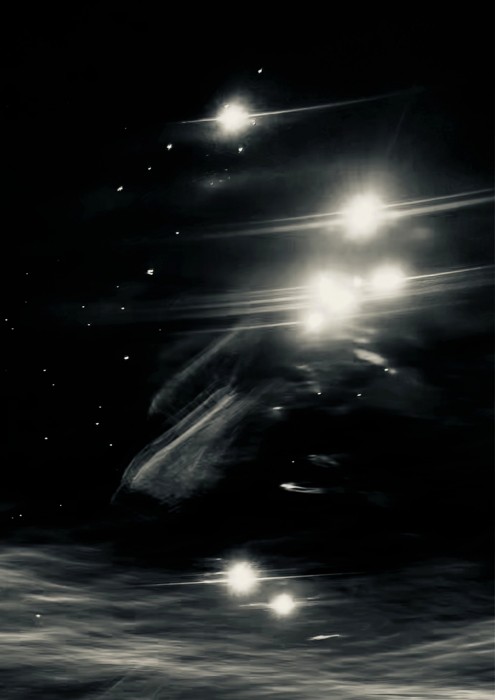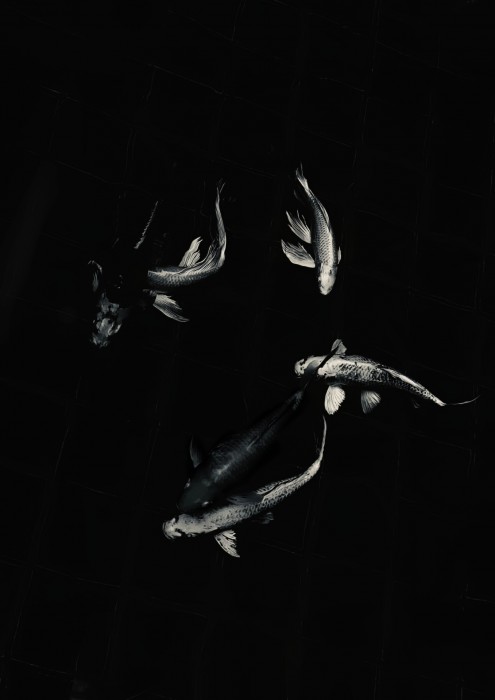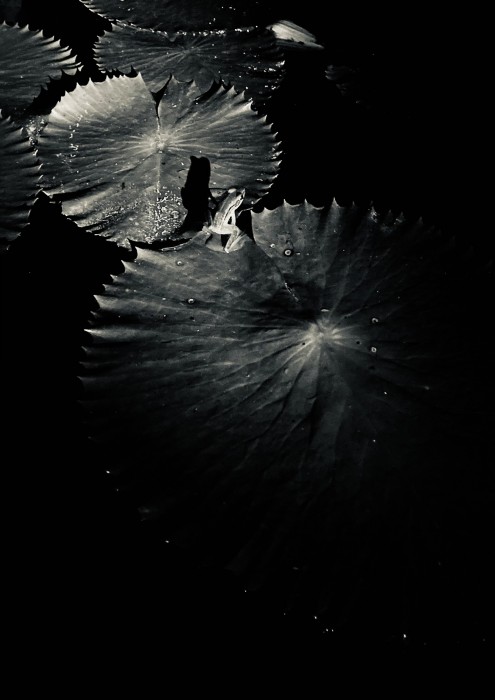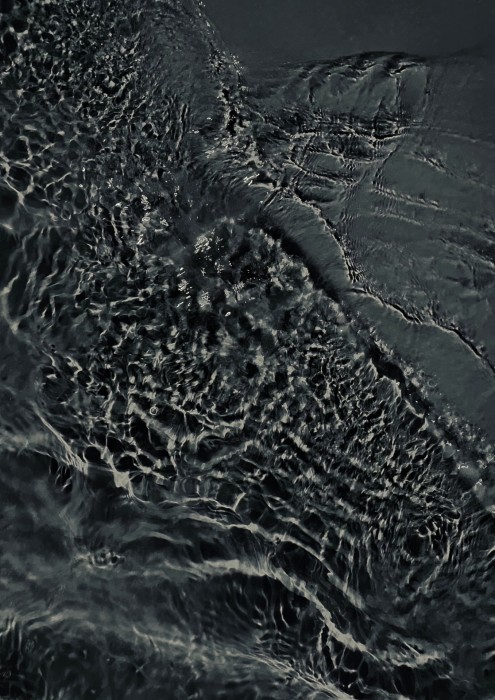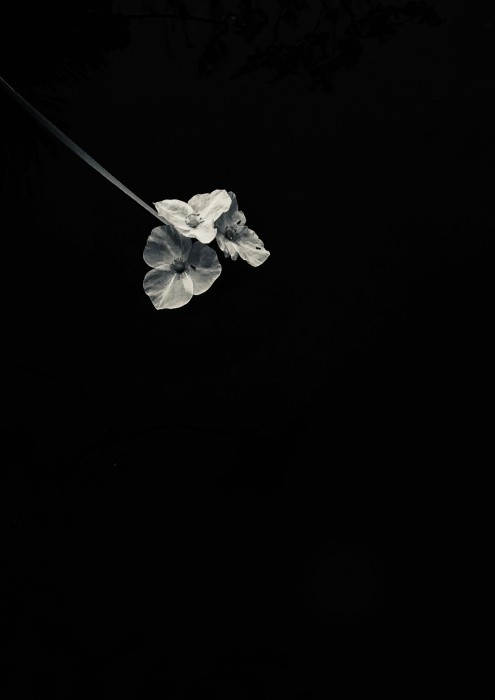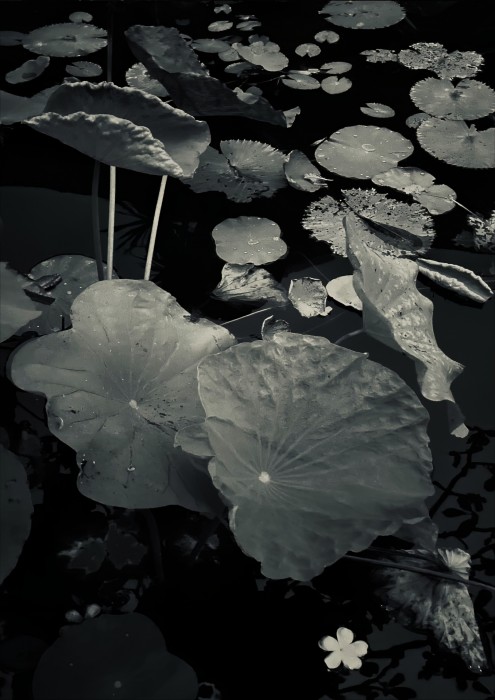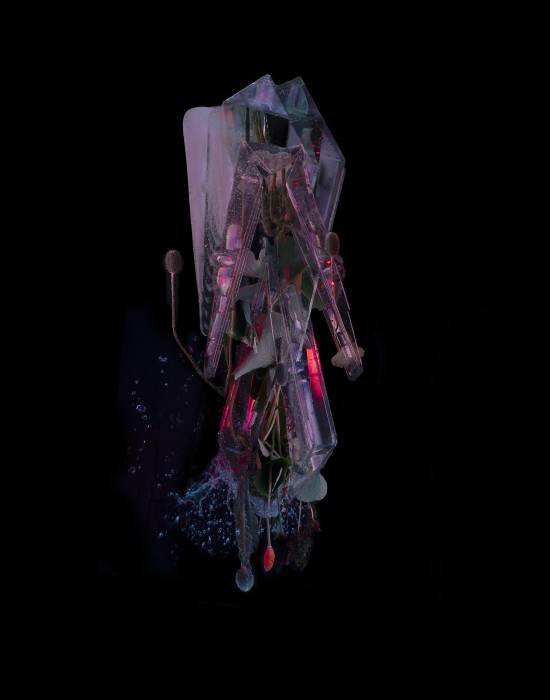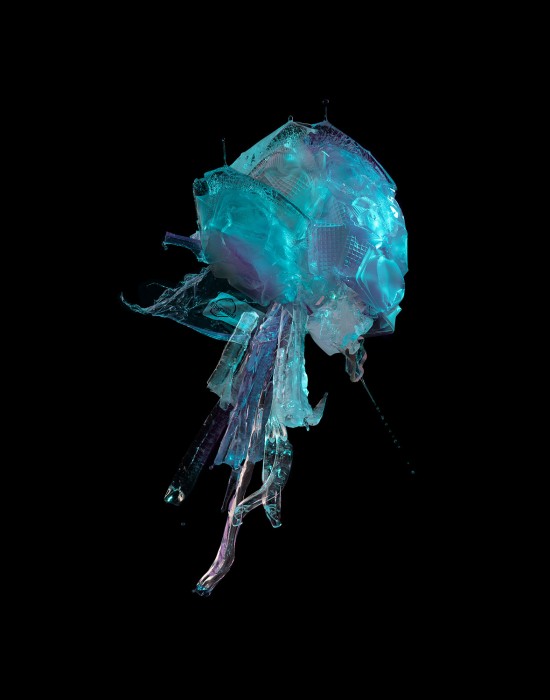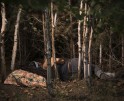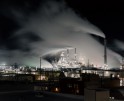Photographers on Photographers: Sarah Knobel in conversation with Melanie Schoeniger
As we enter the peak of summer, it feels like the perfect moment to showcase the captivating photography of Melanie Schoeniger, a talented artist hailing from Germany. In her latest series, Melanie delves into the concept of paradise and the profound emotions attached to it. Rather than presenting us with a vibrant and cheery display, she skillfully captures the essence of darkness, evocatively portraying the realms of memory, subconsciousness, and the enigmatic unknown. I had the privilege of delving into a conversation with Melanie, where she discusses the influences that shape her work and the intricate mental and physical processes involved in its creation.
Melanie Schoeniger is a photographic artist from Germany. Her work seeks to reveal the beauty and essence of nature as a means to create awe and uncover secrets behind all stardust. Her series, To Paradise, unpacks the wonder of being alive and explores themes such as perception, interconnectedness, the human condition, and our place in the larger scheme of things. The principal intention of each image is to evoke a deep connection with nature while protecting and preserving it for future generations. As a Photolucida 2022 Critical Mass Top 200 finalist, her work was awarded with Julia Margaret Cameron, Pollux and Chromatic first places, Tifa Silver, and more. Her work has been on view at Foto Nostrum Gallery, Barcelona in 2022. Her images are featured and published in A. Smith Gallery Editions, Fresh Eyes Talent Book, ArtDoc Magazine, The Hand Magazine, Humana Obscura, and the WWF Climate Challenge Compendium.
Melanie is in the process of collaborating with Tomasz Laczny to make To Paradise into a book. This work is currently being featured in Art Doc Magazine and will be published within the Fresh Talent 2023 Book by GUP magazine. In addition, Melanie recently won the Julia Margaret Cameron cell phone photography award.
Melanie currently lives with her husband and their two boys south of Munich.
Follow Melanie Schoeniger on Instagram: @_ma_vida.
Sarah Knobel: I would love to hear more about the process of developing the series title. When did you decide on To Paradise? How do the images relate to the archetype of Paradise and the tropics?
Melanie Schoeniger : Everything intertwines and influences my artistic expression, whether it’s the books I read, podcasts I listen to, or deep contemplation on philosophical themes. Through art, I unravel and express these thoughts intuitively, often without conscious awareness.
In Robin Wall Kimmerer’s book Braiding Sweetgrass, she tells the story of the three sisters, three plants that support each other. Similarly, I consider my three “plants” or interests—art, biology, and philosophy (including a yoga and meditation practice)—as nourishing and enriching each other. In earlier times one would have called that nature philosopher.
Taking these images, I knew my intention: I wanted to capture and transfer that immense feeling of wholeness and connection I felt and that I was so drawn to approaching, exploring, and playing with it.
While creating this series, I was engrossed in the book To Paradise by Hanya Yanagihara, hence the title offered itself. I carried it on vacation, capturing images of the palm trees above me with my iPhone, which later became part of the series.
Serendipitously, I had previously explored the concept of paradise, delving into its meaning and origins. I also earlier indulged in the book In Praise of Shadow, as well as in Chiaroscuro paintings and a variety of haikus, mainly by Issa. I bet this all has found its way into this series. My narrative holds great significance as I document my place of paradise literally and metaphorically.
Reflecting on my deep longing and contemplation, I questioned whether the specific location or certain elements defined it as my paradise. Could it be a utopia, an enticing vision forever out of reach yet leading the way? As Rebecca Solnit writes in her book Hope in the Dark: “Utopia is always on the horizon.”
Furthermore, I questioned if my paradise was solely about a physical place and the circumstances surrounding it or if it extended beyond that. Was it a desired feeling? Did the place act as a catalyst for my sense of wholeness and connectedness? And does this longing for reconnection meet a fundamental aspect of the human condition, as religions often suggest? It transcends the limitations of time and space, reaching towards a deeper, timeless, and mysterious experience—the little sparkles on infinity, as my favorite author Joseph Campbell would say: “Understanding the relationship between fleeting moments and eternity is the essence of life.”
Paradise has long been an archetype for this profound longing.
Akin to Joseph Campbell’s description of the Garden of Eden, referring to a landscape of the soul within us – a place of non-duality and unity, paradise connotes “a walled garden of delight.” The walls symbolize the veils of perception and duality. And paradise is here and now and “spread upon the earth and men do not see it.” So my series is a poetic expression of transcendental seeing and mystical revelation, glimpses from within that garden.
At the core of my art lies a fundamental question recently crystallized in another project: What does it mean and feel to be alive? Interconnectedness and perception are the themes that intricately weave into this question, shaping our experiences and fragmented realities. The need for more awareness of this interconnectedness remains a pressing issue in our fast-paced world. Not sensing it profoundly is a key challenge of our time.
SK: I love your reference to paradise being between fleeting moments and eternity, but also as an archetype of profound longing. To me, it feels almost cosmic, mysterious, and otherworldly. In another way, the images almost feel like memories, and as I close my eyes, I am in a void, and only the essential elements reappear. The viewer’s mind can go so many directions with the darkness of these photos.
MS: I love that you are sensing a notion of mystery; that was my intention, as the mysterious is the unknown, the unpredictable, something that lets you look twice, or that opens up space, something that is not completely familiar and therefore can create awe. I also noticed later it has this womb-like feeling, the kind of first paradise, the female power, which is underestimated and underrepresented.
You mention memory, and I feel many personal memories and emotions are interwoven into this project. But the focus is more on a collective metaphysical and metaphorical level, on visual poetry.
Thinking of connection and roots, a notion that comes to my mind is the root chakra and its beautiful mantra: Aham Brahmasmi which means the ground of my being is the ground of the universe; we are one. Because if you feel connected, you are at the same time interconnected. Like Chief Seattle said: “This we know: the earth does not belong to man; man belongs to the earth. All things are connected like the blood that unites us all. Man did not weave the web of life; he is merely a strand in it. Whatever he does to the web, he does to himself.” Or just think of my favorite allegory for interconnectedness: Indra’s net, where every individual is a diamond within the net of life that reflects all the other diamonds from its unique perspective.
SK: You have referenced ‘my paradise’ a lot when discussing the work, it seems very much influenced by a specific location. Can you tell me more about your personal version of paradise? But more specifically, I would love to know how the location relates to the darkness in this work.
MS: During my early years in my first job, I diligently saved every penny and embarked on a one-month backpacking adventure to Australia. It was a dream come true, especially because I had a particular destination—the Great Barrier Reef. Before my trip, I even took diving lessons in an Olympic indoor swimming pool in Munich to prepare for the incredible experience awaiting me in Australia. This journey sparked a love for exploration, leading me to visit other countries like New Zealand and Thailand in the subsequent years. Eventually, I embarked on a seven-month backpacking expedition through South America and Southeast Asia. During my journey, I spent weeks on a remote island in Thailand without electricity, fully embracing life in harmony with nature.
Nearly two decades have passed since my first visit, and I have returned to Thailand with my husband and sons. They, too, have fallen in love with this extraordinary place. The perfect combination of elements creates a sense of paradise for me. It’s not merely about the physical location; it’s an immersive state of being. The sea, the lush subtropical vegetation, the weather, the food, the light, and the overall atmosphere in this predominantly Buddhist country contribute to this sense of paradise. The dogs seem more at ease there than in Europe; it’s truly astonishing.
As a European, I cherish being in a place where the sunset arrives early.
This may sound peculiar, but I appreciate the darkness there (no surprises there) and the structure it brings to the day. Having an equal balance of light and darkness each day, rather than constantly shifting, provides me with a deep sense of comfort. I find solace in the darkness enveloping me like a cozy blanket, yet I don’t require a jacket to immerse myself in it. Being able to wear minimal clothing is crucial to me, as I tend to feel cold most of the time. Walking barefoot is an incredible luxury, and plunging into water that blurs the line between indoors and outdoors in terms of temperature is a marvel. There are no barriers; everything seamlessly merges. I would happily spend my time indoors solely for sleeping. And I am completely captivated by the light and luminosity that dances and shimmers on the sea, wells, or lush vegetation filtered by palm trees.
My paradise is unlike the cliche iconography of a place full of light, a forest where the sun shines and lits every single corner of this ethereal place. Instead, I present a place where darkness is normal, a natural condition. The light is present, of course, but it is not this iconic dominant element. The light is simultaneously realistic and idealistic, concrete and abstract, rendering the forms tangible within the darkness. My paradise is a dark forest, a place that instead of causing us fear, feels safe and intimate prioritizing a sense of participation over observation.
SK: It seems like this work is about climate change – is it? And how has your relationship with nature changed over time?
MS: Definitely! My relationship with nature is like a love story that has grown deeper over time. I spent my childhood in a rural idyll in Bavaria surrounded by lakes, rivers, meadows, and mountains. Traveling the world has definitely enlarged my horizon and opened up my mind to all the wonders and its diverse and abundant ecosystems – with coral reefs and rainforests leading the way – of this beautiful planet. I always created in-door jungles wherever I lived and worked – this is crucial to me. Now I even enjoy an outdoor jungle with bamboo.
So I perceive all my work as fundamentally being climate work: Envisioning and contributing to a life-sustaining future. Joseph Campell called artists the Shamans of Modern times, the myth makers. Creating beauty and aesthetic arrest, touching and nourishing people’s hearts, and sparking inspiration; this is my way of hopefully generating a ripple effect of actions like the wings of a butterfly.
For me, our new myths include the awareness of interconnectedness.
But apart from individual choices, we need to change the rules in favor and respect of nature and humanity, changing our narrative and priorities, shifting responsibilities and holding big corporations accountable. I have witnessed the devastation that Chevron caused in the Ecuadorian rainforest. That is why I support Ecocide law, criminalizing mass damage and destruction of ecosystems.
SK: From just this short conversation, it is clear you are influenced by what you are reading. What is the current book you are reading this summer?
MS: Great question. I am a multiple books reader as well as a re-reader and I also flip books open that have a permanent place next to my bed.
I am currently reading: An Immense World by Ed Yong, Ways of Being by James Bridle
The Perennial Philosophy by Aldous Huxley , Women Who Run With The Wolves by Clarissa Pinkola Estes and The Man Who Fell to Earth by Walter Tevis.
My current re-reads: Myths to Live By by Joseph Campbell, The Creative Act: a Way of Being by Rick Rubin, Field guide to the Haunted Forest by Jarod K. Anderson, Kobayashi Issa’s best haikus, and 1605 Collective.
And I am open for any reader to share more book inspirations, podcasts etc.
Sarah Knobel is an artist captivated by the concept of commodities and their existence beyond mere utility. Through her evocative imagery, she crafts liminal spaces, inviting viewers to contemplate the enigmatic nature of everyday objects and our waste. Her work seamlessly weaves together optimism and hostility, beauty and repulsion, exploring the collision between the natural world and opposing forces.
Follow Sarah Knobel on Instagram at @sknobel
Posts on Lenscratch may not be reproduced without the permission of the Lenscratch staff and the photographer.
Recommended
-
Earth Month Photographers on Photographers: Jason Lindsey in Conversation with Areca RoeApril 21st, 2024
-
Earth Month Photographers on Photographers: J Wren Supak in Conversation with Ryan ParkerApril 20th, 2024
-
Earth Month Photographers on Photographers: Josh Hobson in Conversation with Kes EfstathiouApril 19th, 2024
-
Earth Month Photographers on Photographers: Leonor Jurado in Conversation with Jessica HaysApril 18th, 2024
-
Earth Month Photographers on Photographers: Sarah Knobel in Conversation with Jamie HouseApril 17th, 2024

